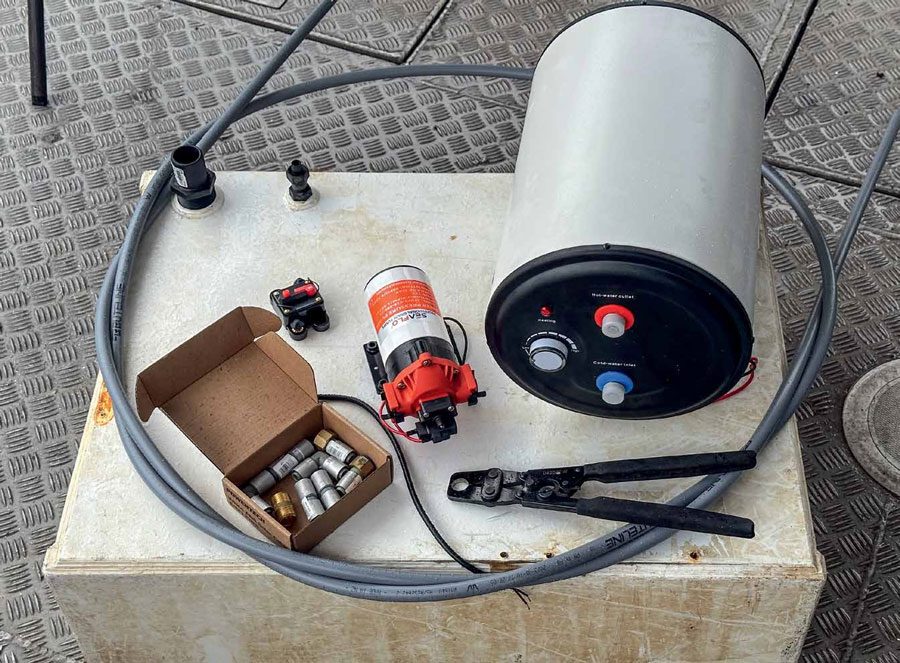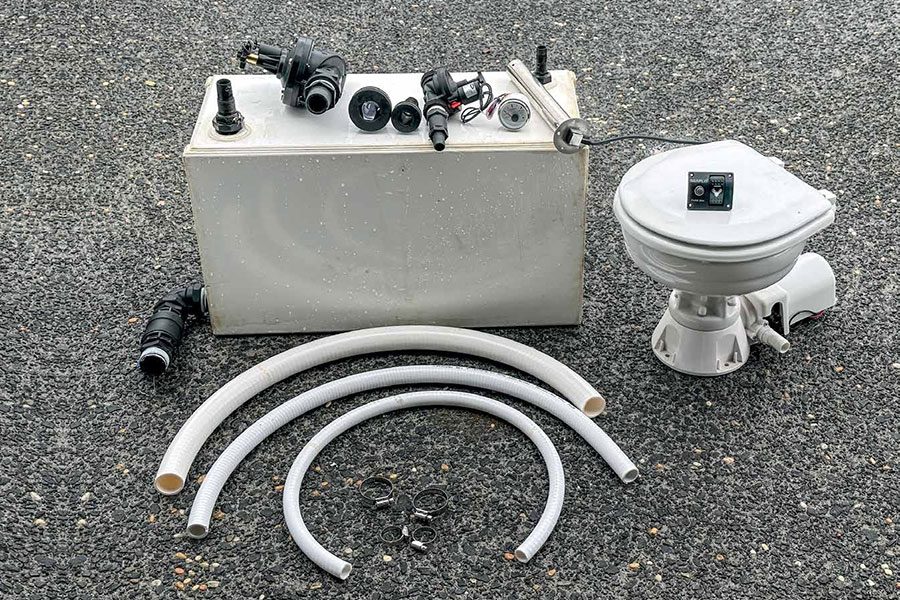

One of the unsung pieces of equipment on your boat is the ground tackle – the anchor, chain and rode holding you in place while fishing, diving or swimming. But like everything else on a boat, it needs a little TLC from time to time. Story by Norman Holtzhausen.
Most boats are equipped with a carbon-steel anchor and chain, hot-dip galvanised (coated in zinc) to prevent rusting. Although stainless anchors and chains are available, they can be two to three times more expensive. Also, stainless steel is more brittle than conventional steel and has about a 20% lower breaking strain for the same gauge.
For this reason stainless ground tackle is usually only found on luxury boats and superyachts, where appearance might be more important than price. At the other end of the spectrum racing yachts and skiffs may feature a lightweight aluminium anchor, intended for emergencies rather than as a regular option.
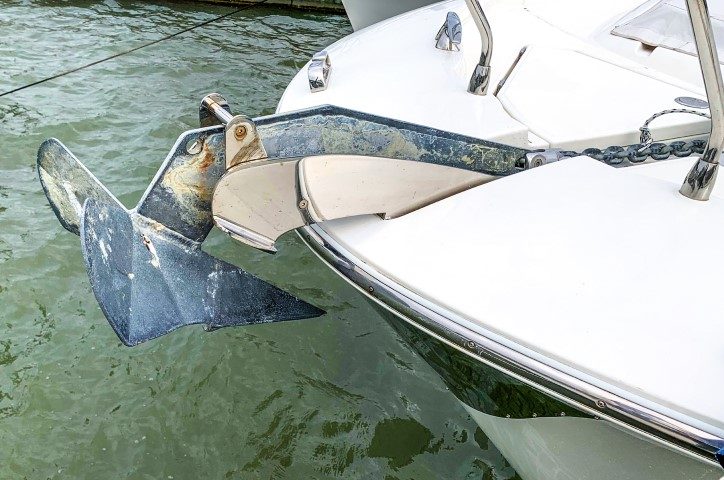
A good quality galvanised coating will last many years. Over an extended time, however, the galvanising on both the anchor and chain wears through, and eventually the dreaded rust makes an appearance. This isn’t a problem if the tackle’s used regularly, as it tends to be self-polishing. But an unprotected chain and anchor rusting away in a bin over the winter could produce an unpleasant surprise at the start of the season.
So, here’s a reasonable question: do we chuck it all out and buy new, or can the old gear be cleaned up and regalvanised? The answer gets complicated because there are different considerations for the anchor itself versus the chain. And it is not just down to the cost.
Let’s start with the anchor.
The decision to regalvanise or replace comes down to the extent of the rust, and its size/cost. First, if there is any structural rust affecting the strength of the anchor it should definitely be replaced.
Check if the rust has caused significant pitting or deep corrosion, especially in the critical wear points on the shank where the chain or swivel attaches. Also check any shackle pins or articulation points that are otherwise not visible, as these are prime spots for rust to form. Assuming the rust is only on the surface, then it comes down to cost.
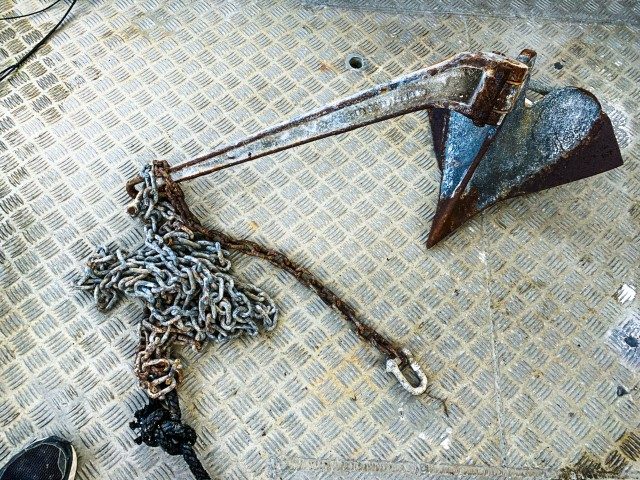
Galvanising a large object like an anchor is based partly on the amount of work required to prep the article, and mainly on the weight of the zinc that is added.
This is calculated on the weight of the object but there is also a minimum charge, so it may be uneconomical to regalvanise a small anchor or similar-sized object. Most medium-to-large anchors, which can cost many hundreds of dollars new, may be worth recoating provided they are still sound.
But recoating your chain is a more vexing question. This is because the regalvanising process includes several steps:
• the surface rust is mechanically removed, usually by shotblasting or similar. This may be followed by a soak in a caustic cleaning solution, followed by a thorough rinse off
• the chain is then ‘pickled’ in an acid bath which removes all traces of oxidation (rust) and scale. Once down to shiny metal it is again rinsed
• after that it may be dipped into a flux solution to aid adhesion, although the flux may instead be floated on top of the zinc so the chain passes through this layer as it is dipped
• the critical step is when the chain is dipped into a bath of molten zinc, which becomes liquid at around 450oC. It remains in the bath until it reaches the same temperature as the zinc, usually in less than 10 minutes. Note that a diffusion reaction happens between the zinc and iron – the two metals actually ‘co-mingle’ at that interface layer rather than the zinc simply forming a surface layer that can flake off like paint
• finally, the chain’s withdrawn from the zinc bath and sometimes quenched in a coldwater bath. Any sharp drips of zinc are manually ground off, and the chain may be tumbled in a drum to smooth off all the links.
When galvanising a chain (rather than an anchor) the dipping process is somewhat more complicated because the molten zinc can literally ‘solder’ the links together. So the chain has to be ‘spun’ while being dipped, to ensure the links remain in constant movement relative to each other and two surfaces never rest together. This ensures that zinc only has a chance to form a layer on the surfaces, not bridge the gaps between links.
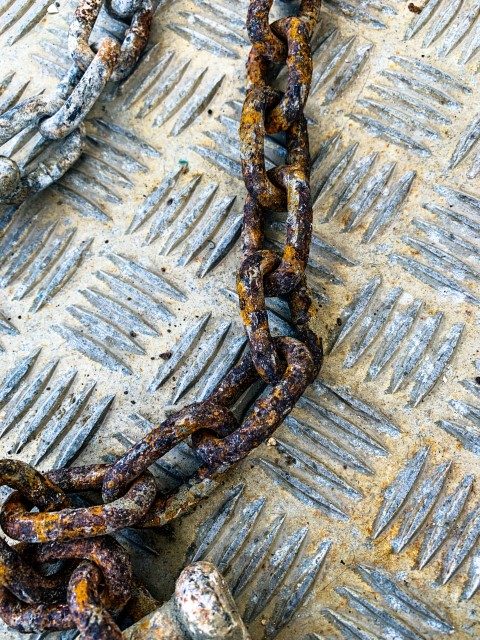
But it is the heating part of the process which is the problem, because it causes what is known as ‘hydrogen embrittlement’. And this can occur on any previously heat-treated metal that is galvanised. There are a number of reasons for this, and a quick Google search will provide a detailed metallurgical explanation. The end result is what matters – the underlying metal becomes brittle and weak, and not necessarily in a consistent way.
So the entire chain – or maybe a single link – may become brittle. The old proverb applies – a chain is only as strong as the weakest link. To be completely certain of its strength you would have to test the entire length of chain – with an associated cost which somewhat negates the cost saving of regalvanising. And, naturally, if the chain breaks during the test you throw it away and replace it… Somewhat counter-intuitively, this problem occurs mostly in the better grades of chain, especially the high-tensile grade G5 and above. This is because of the way the strength of these chains is increased during manufacturing, through processes that involve heat-treating. Both hardening and tempering involve heating the metal to a certain temperature and then either allowing slow cooling or rapidly quenching.
The temperature involved in hot-dip galvanising disrupts the molecular arrangement of the steel that was created by the previous heat treatment, both damaging that strength and making the steel more brittle. If the chain is galvanised at manufacture, a further heat treatment (involving baking at temperature then slowly cooling) is incorporated to prevent any hydrogen embrittlement.

This is much less of an issue for chains which have not previously been heat-treated, which are lower grade and cheaper. So re-galvanising a G7 grade chain may reduce the strength such that it becomes the equivalent of a G5 or less, whereas a G3 or G4 chain may not suffer much loss of its original strength. Of course, that G3 or G4 grade was not particularly strong to start with.
According to Grant McDuff of Chains, Ropes and Anchors on Auckland’s North Shore, it seems that a lower-grade chain can safely be regalvanised once or twice in its lifetime. But he warns that the higher grades should probably never be regalvanised if their maximum load capacity is required.
Given that lower grade chains are cheaper, the economic benefits for recoating them are less clear. It’s probably not worth considering regalvanising for a recreational boat that has a rode comprising a mixture of chain and rope, where there is perhaps between 10 and 15m of actual chain.
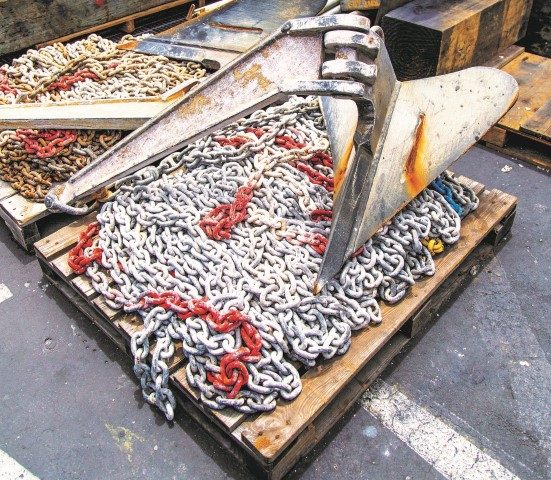
To compare the numbers, we checked with East Tamaki Galvanisers – one of the few companies that will regalvanise anchor chain. It charges $3.50 plus GST per kilogram for the job, with a $70 minimum charge (assuming the chain is in a reasonable condition).
Short-link 7mm Titan galvanised anchor chain weighs one kilogram per metre and costs around $9 per metre new. So, for less than eight metres of chain it would cost more to regalvanise than buy new. With the peace-of-mind provided by new chain it is a no-brainer to just replace it with new chain each time.
But it’s a different matter where you have a significant length of all-chain rode – some cruising boats have 100m to 200m of chain. With even the cheaper grades G3 and G4 costing around $15 per metre in an 8mm size (and G7 costing over $30 per metre for the same size), the economics swing the other way. Large chain sizes are even more expensive, so it could turn into thousands of dollars for a full replacement.

If you are a recreational boater who never ventures out into storm conditions, you may never need anywhere near the maximum strength of your rode. In this case it may make both good sense and be perfectly safe to regalvanise what you have.
On the other hand if you are an offshore cruiser who ventures into the tropics and could conceivably be caught on a lee shore in a hurricane with only your ground tackle keeping you alive, you might want to reevaluate your life choices and spend the extra money.
Whatever you decide, now is a good time to go and check the condition of your ground tackle. Before you need it.



